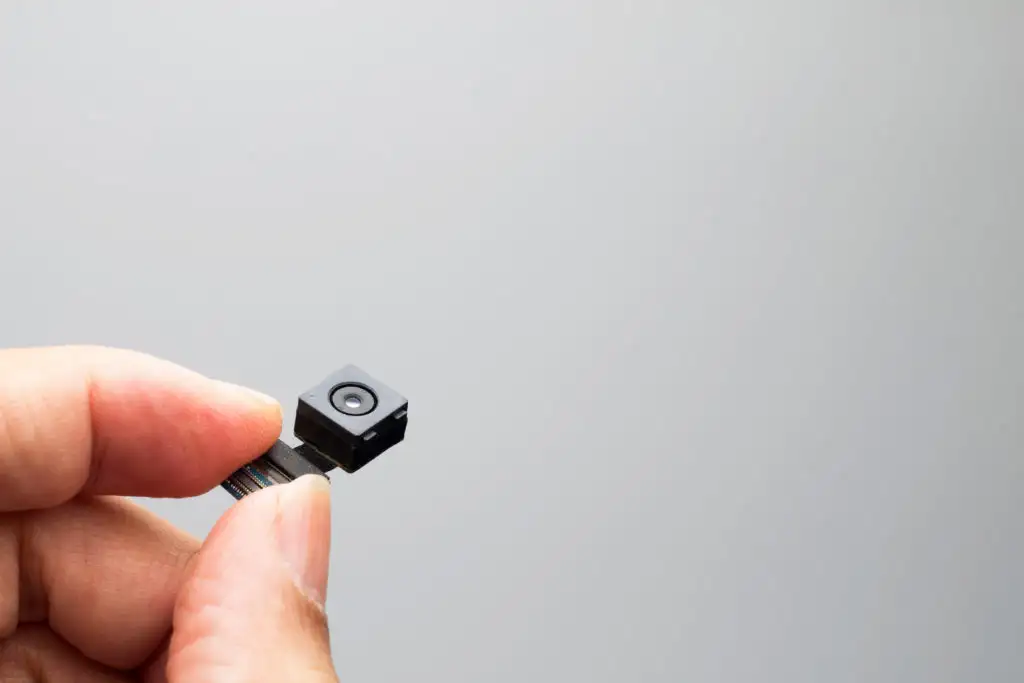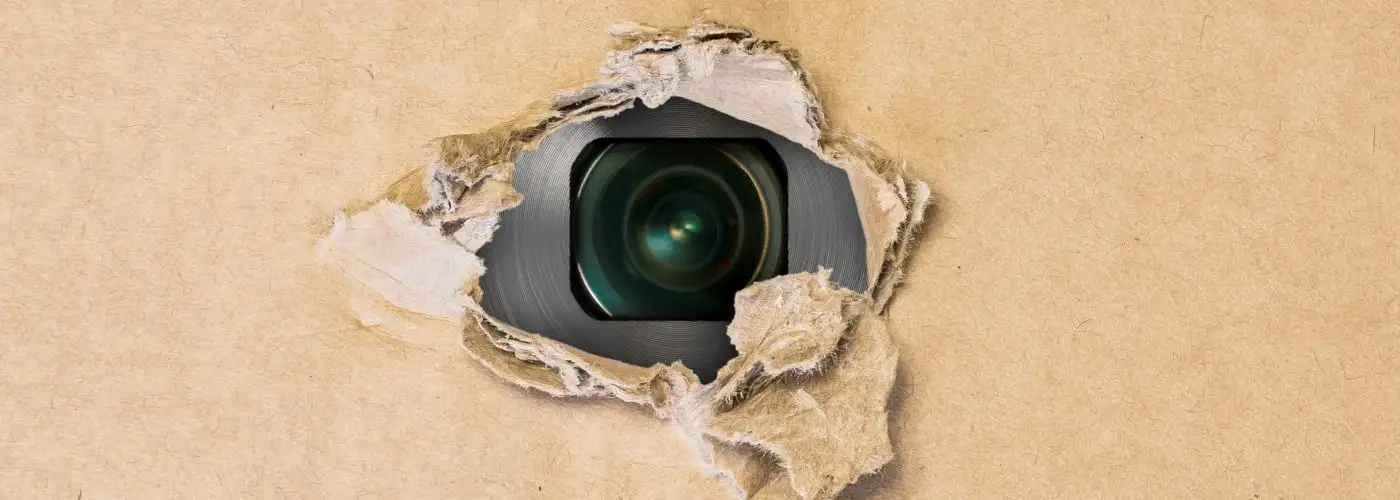It’s a horrifying scenario—finding a hidden camera in your hotel room or vacation rental. And unfortunately, it’s also a recently emerging trend as more and more people report this invasion of privacy. One 2019 survey found that a whopping 11 percent of respondents had found a hidden camera in an Airbnb. Protect yourself by learning how to check for hidden cameras in your vacation rental or hotel room.
Some of the links featured in this story are affiliate links, and SmarterTravel may collect a commission (at no cost to you) if you shop through them.
Check for Hidden Cameras: How to Look for a Camera

I interviewed a Technical Surveillance Countermeasures and Intelligence expert from Advanced Operational Concepts who goes by the anonymous nickname “The Monk” (he declined to be named due to the sensitive nature of his work). The Monk has searched for hidden devices in conflict zones for the highest levels of the U.S. military’s Special Operations community. Here’s his advice for looking for a hidden camera.
“There are essentially three primary methods for checking for a hidden camera: scanning of radio frequencies (RF), lens detection, and physical search. Many handheld devices that do RF scanning and lens detection are available on the commercial market, with most costing less than $100. However, no single method is going to be 100 percent accurate.
“RF scanning, for example, will only help in identifying a device if that device is actively transmitting. If it is a store-and-retrieve device, where the collected data is held on an SD card to be physically recovered later when you’ve left the building. If the data is transmitted only at intervals, then an RF scanner will be fairly useless.
“Lens detection is very effective if used properly, but it requires patience and proper technique. If you are too far from the lens, sweep the room too quickly, or are just standing at the wrong angle from the lens, then you’ll likely miss seeing the lens when it reflects the light from your own light source.
“Physical inspection can be the most thorough method, but this requires both patience and access that you may not have. If you can’t get away with prying open smoke detectors, opening the backs of paintings, and possibly opening a section of a wall to see if anything is inside, then you won’t be able to complete a full and proper physical search.
“When faced with these types of limitations, often it is best to utilize a hybrid of all three search methods to whatever extent you find possible. You may not be able to achieve 100 percent confidence that the space is clear of hidden devices, but you’ll be a lot closer than you were when you first walked into the room.”
Check for Hidden Cameras: Where to Look for a Camera
The first step is to think logically about what someone would be interested in capturing on a hidden recording device. “Cameras typically need a clear view of the subject to get the best images,” explains Jack Plaxe, a hotel and lodging security professional and Founder and former Managing Director of the Security Consulting Alliance. “A visual scan of the room in key areas such as sleeping rooms, bathrooms, et cetera, may reveal clues that lead to the discovery of covert devices. For example, an unusually positioned object in the room may warrant a closer inspection. This was how an Airbnb guest found a camera concealed inside a motion detector that seemed out of place in a bedroom.”
It could be helpful to familiarize yourself with what hidden cameras can look like. They are easy and inexpensive to purchase (check out some on Amazon here).
The Monk says, “Bathrooms, bedrooms, and office space/desks are very common targets. Areas where computer screens are going to be visible are especially sought after, as the camera may capture login passwords, bank account information, personal browsing habits, and all sorts of other valuable information. A properly installed device will leave little to no outward sign that it has been put in place. Most off-the-shelf hidden cameras are now so small that they can come prepackaged in commonplace items that would appear innocuous in most settings.
“Smoke detectors, alarm clocks, even electrical outlets and power strips can have a complete audio/visual monitoring suite built in with room to spare. But even if the device itself is hard to detect, the activities of those responsible for the device may be more telling.
“In hotel rooms, for example, if items continue to be placed in a particular location after a room is serviced, then that could be a sign that the item needs to be positioned that way so that a camera has a good angle of view. Of course, this could also just be the maid tidying up, so don’t immediately jump to full paranoia.”
What to Do if You Find a Hidden Camera
Hiding hidden cameras in hotel rooms or vacation rentals is illegal and also a violation of most rental companies’ policies.
For example, Airbnb’s rules about electronic surveillance devices states that they do not allow “concealed and undisclosed devices monitoring common spaces” or “devices located in or monitoring private spaces.”
So make sure you check a vacation rental listing carefully for any mention of a nanny cam in the living room before you make a reservation. If you do find an undisclosed recording device in your vacation rental, leave immediately and report it to the company.
If you encounter a hidden camera in a hotel room, immediately ask for a room change. “If that doesn’t work,” says Ernie Naran, Director of Special Projects for Focus One Consulting Group, “turn objects [with suspected hidden cameras] such as radios, clocks, et cetera, around so that they face in a different direction. If that is not possible, cover the items with a towel.”
When You Shouldn’t Check for a Hidden Camera
Depending on where you’re traveling, checking for hidden cameras might not be such a great idea. Mike O’Rourke, a former Special Forces soldier and Green Beret and current CEO of Advanced Operational Concepts, advises: “In certain countries (Russia and China top the list), it is highly likely the government intelligence services actively monitor hotels frequented by business travelers. Anyone they observe using search techniques to find hidden devices in their accommodations is likely to be branded as a hostile intelligence operative and treated accordingly. Bringing even the least expensive search devices into these countries is likely to land the traveler in hot water, sometimes before even leaving the airport.”
Editor’s note: This story was originally published in 2018. It has been updated with the most recent information.
Follow Caroline Morse Teel on Instagram @TravelWithCaroline for travel advice and inspiration from around the world.
You Might Also Like:
• The Shocking Hotel Room Security Feature That Can Be Turned Against You• 11 Important Rideshare Safety Tips for Travelers
• What Is the Safest Hotel Floor to Stay On?
• The One Item You Should Always Hide in Your Hotel Room When Traveling
• What to Know About Airbnb’s New Camera Policy
We hand-pick everything we recommend and select items through testing and reviews. Some products are sent to us free of charge with no incentive to offer a favorable review. We offer our unbiased opinions and do not accept compensation to review products. All items are in stock and prices are accurate at the time of publication. If you buy something through our links, we may earn a commission.
Related
Top Fares From
Today's Top Travel Deals
Brought to you by ShermansTravel
Porto to Lisbon: 7-Nt, Small-Group Portugal...
Indus Travels
 vacation
$1899+
vacation
$1899+
Greenland: Luxe, All-Incl. 11-Nt Exploration Small-Ship...
Swan Hellenic



Ohio: Daily Car Rentals from Cincinnati
85OFF.com






